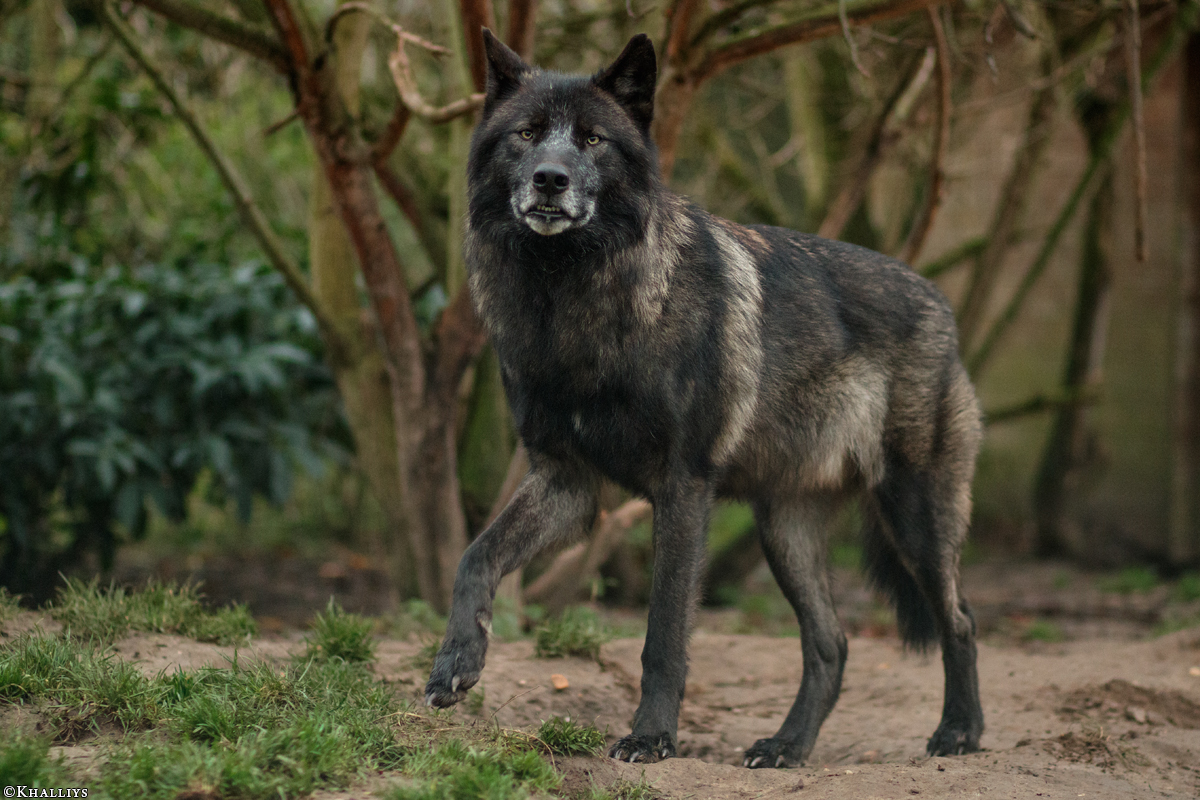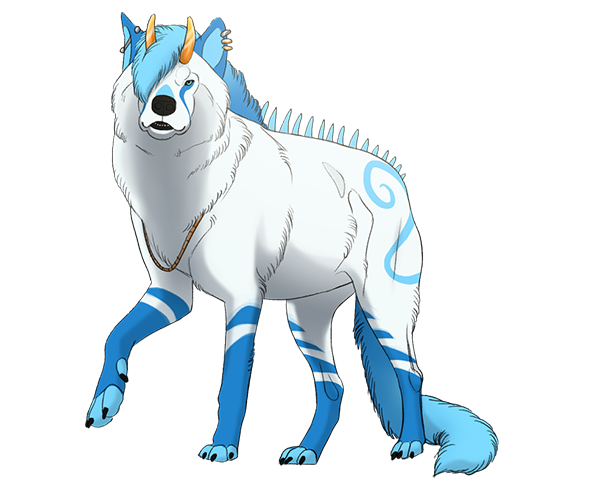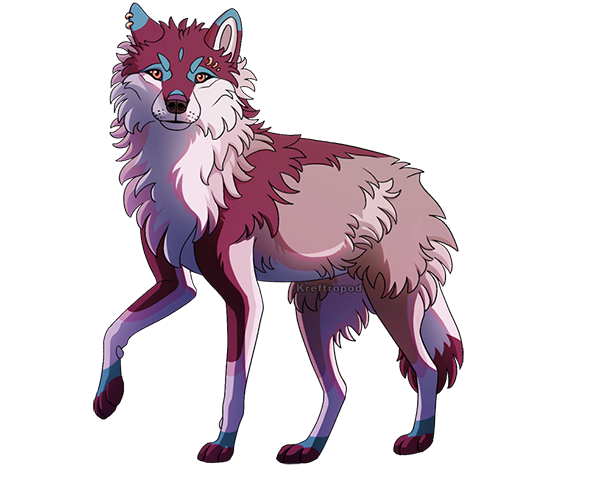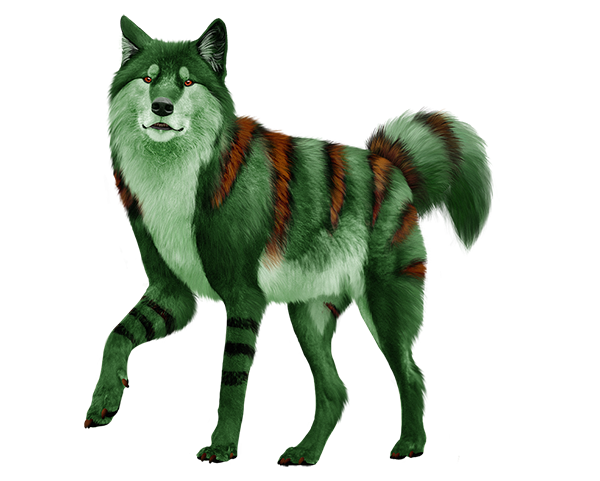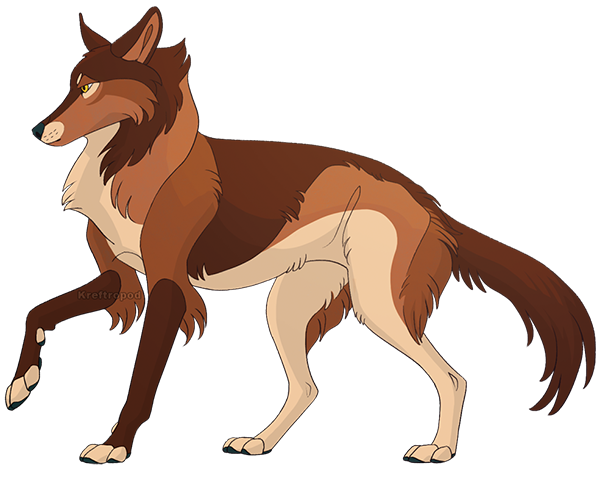How to reference
Kreftropod
- Created
- 1 year, 5 months ago
- Creator
- Kreftropod
- Favorites
- 40
Profile
How to reference
The difference between tracing, copying and referencing
Usage / Sharing
The content of this post is shared under a CC BY-NC-SA license.
You may share it as much as you'd like, as long as:
- It's NOT for commercial purpose.
- You give proper credit. (see FAQ)
- You share alike.
Keep in mind that I'm not an expert, just another hobbyist artist trying to help by summarising what I've picked up over the years about referencing in art. This post includes some basics about Creative Commons licenses, but doesn't go into any deeper detail about copyright or legal advice, as I'm not educated in that field. English is also not my first language. Thank you for understanding!
I originally wrote this post in Swedish back in 2019 (linked below). If you want to translate it into another language then go ahead! Please send me a message if you do, and I'll link to the translation here :D
Is it cheating? (No, it's not!)
Art is difficult. The materials are difficult, art programs are difficult, and regardless of medium, one of the most difficult things is to get the thing you're drawing to actually look the way you want it to. That's where references come in.
But what are references? Isn't that cheating?
Internet is a big and scary place, and many aspiring artist are often told that "you shouldn't use references! That's cheating! If you use references that means you're a bad artist!!". This is not true. You, as an artist, can't learn what a thing looks like or how to draw it if you never use references. You can't build a car engine if you've never learned what an engine is supposed to look like, or what the different parts do.
The belief that it's "cheating" to use references usually comes from a misunderstanding about what using references actually means. Whenever someone calls references "cheating" they're usually thinking about tracing or copying art, which is not the same thing. With the growth of the internet it's become more and more common for artists (especially, but not exclusively, younger and beginner artists) to trace or copy images and then claim that they've created the image without any help. To trace or copy is in itself not a bad thing, the same way that, say, following a unique recipe when cooking food is not a bad thing. It's a great learning tool. However, it is wrong to follow the unique recipe and then claim that you invented the recipe yourself. Tracing or copying someone else's photo or artwork and then claiming that you've made it without any help is the same thing.
But what's the difference between tracing, copying and using references?
When and how am I allowed to use one or the other?
- Material = Photos, drawings, videos or other visual material that you can use to create an image.
- Credit = Writing the name of the owner (usually the original creator) of the material that you've used, and link back to that person.
How do I know if I'm allowed to use the material?
- Find what license the material is shared under. (More about licenses in the FAQ)
- Attribution (BY): You must give credit to the owner of the material you've used.
- NonCommercial (NC): You're not allowed to use the material commercially to make money or any other kind of profit.
- NoDerivatives (ND): You're not allowed to edit or change the material in any way.
- Share alike (SA): You must share your own creation under the same license as the material you've used.
- Public Domain (CC0): The material is free to use, even commercially and without credit.
What is allowed
- Normal referencing.
- Tracing, copying or manipulating material that you've gotten permission to use from the owner of the material (by asking or through license information), and where you give credit for the material used.
- If the material is in the Public Domain you don't need to ask for permission or give credit; it's free to use.
What is not allowed
- Tracing, copying or manipulating material that you have Not gotten permission to use from the owner of the material (neither by asking or through license information).
- Tracing, copying or manipulating materials and not giving credit to the owner of the material.
- The exeption to this is Public Domain, where you don't need to ask or give credit since it's free to use.
To more easily illustrate the differences, we'll be using these two photos in the examples below.
What does it mean?
To trace means that you're drawing your lines on top of a photo or other material, literally tracing the edges and/or details of the material.
How am I allowed to use it?
You're allowed to trace as a way of learning. In the same way that there are coloring books that you can use to practice coloring, you're allowed to trace photos or other materials in order to learn what something looks like, and to practice and familiarize yourself with the shapes and how it all fits together. You're allowed to upload traced art online if you have permission from the owner of the material you've traced, and give proper credit.
How am I Not allowed to use it?
You're not allowed to trace and then upload the traced image without permission from the owner of the original material. This is viewed as theft. You're not allowed to upload it without credit. You're not allowed to claim that you've made the image without help, or make other people believe you've made it without help by not saying anything at all (e.g. if you upload a traced image and don't mention that it's traced or give any credit, and when people comment positively you thank them, again without mentioning that it's traced, making them believe you've made it without help). You're also not allowed to sell your traced image for profit (money, online-points, etc) as this too can be viewed and treated as theft.
Examples:
This is a traced image of the original photo. The lines overlap perfectly with the photograph.
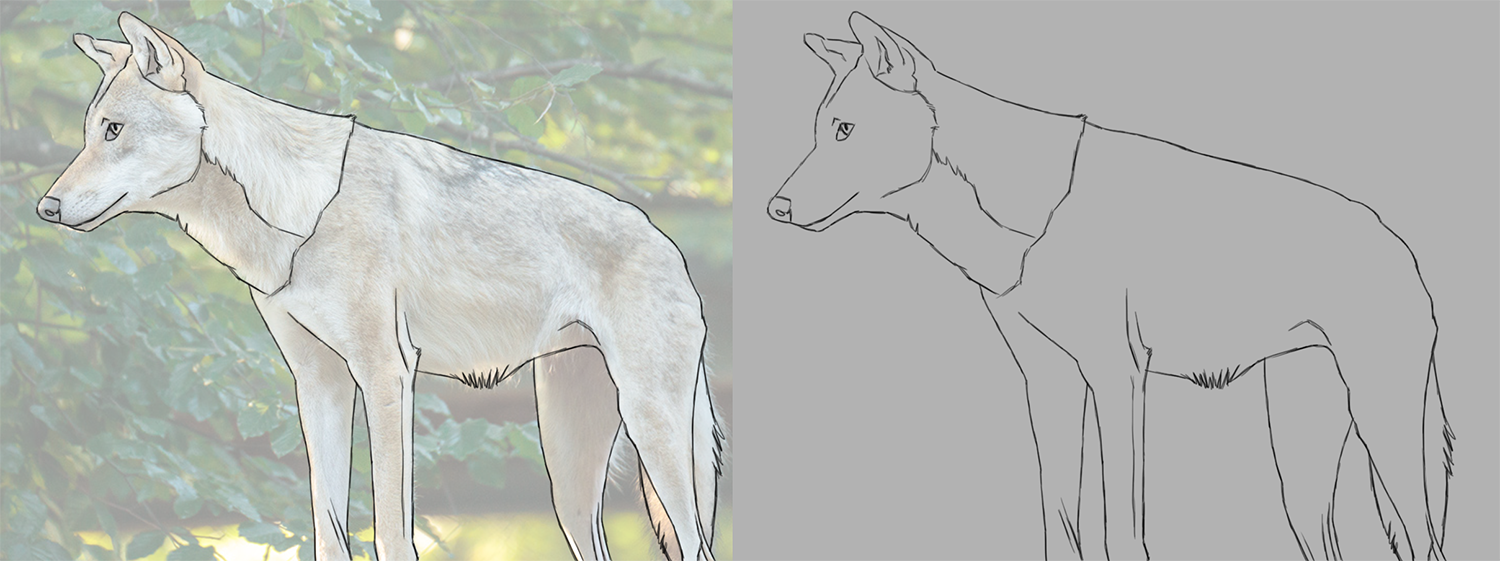
View larger image (opens in new tab)
These lines are drawn in a different style, but they're still traced and overlap perfectly with the photograph.
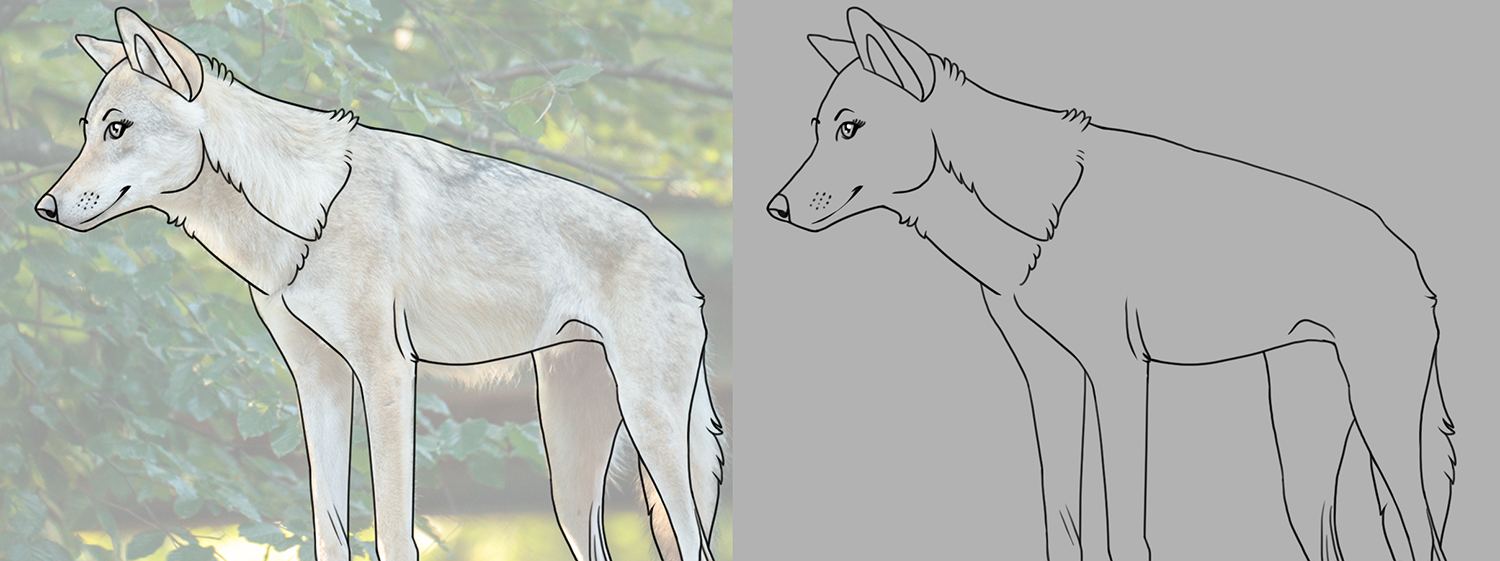
View larger image (opens in new tab)
Here, two different photos are used to draw the front and back halves of the wolf. Even if the final image now differs from both the original photos, this still counts as tracing.

View larger image (opens in new tab)
This image is drawn in a different style, and has a few changes from the original photo (an open mouth, raised paw and curled tail). Despite the changes, it's still similar enough to count as tracing, with most of the lines overlapping perfectly with the original photograph.
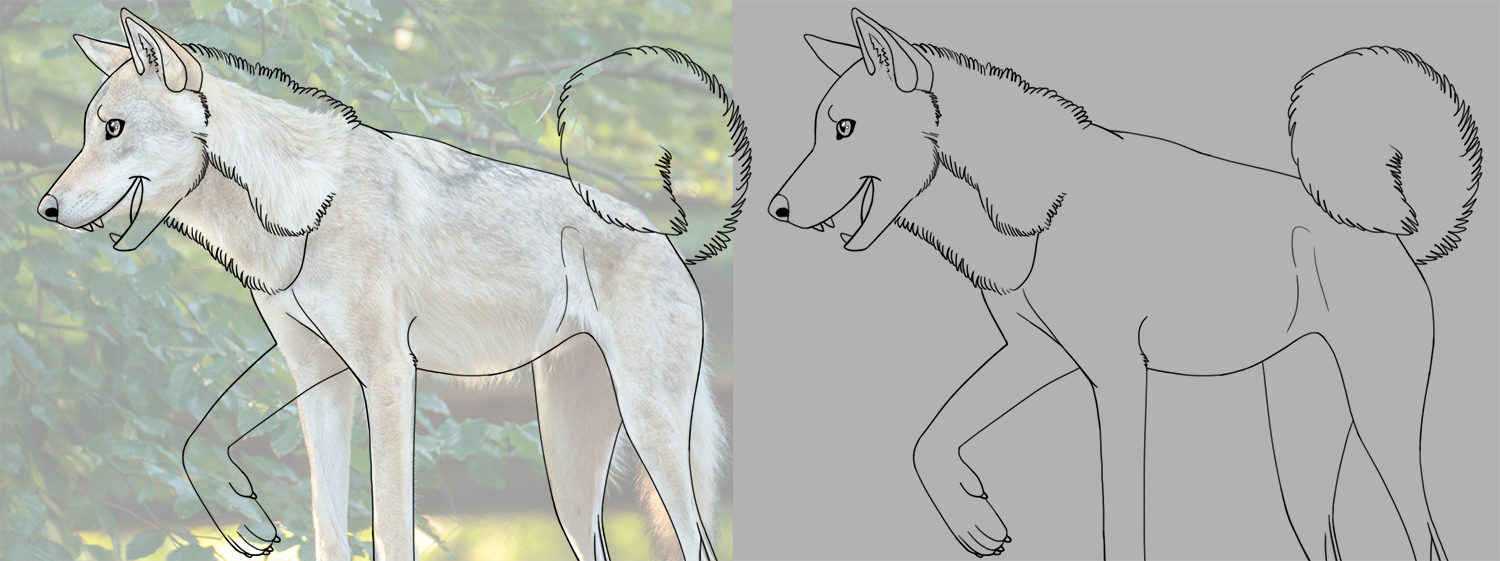
View larger image (opens in new tab)
Also known as: Eyeballing, Heavy reference, Strong reference
What does it mean?
To copy means that you're copying a photo, an image or other material very closely. It's often done by having an image or a photo next to your own drawing, and then copying the pose, style or expression by mimicking the lines of the original. A copy is very similar to the original, but doesn't have to match the original exactly, the way a traced image does.
How am I allowed to use it?
You're allowed to copy as a way of learning. You're allowed to upload copied art online if you have permission from the owner of the material you've copied, and give proper credit.
How am I Not allowed to use it?
You're not allowed to copy a material and then upload the image without permission from the original owner. You're not allowed to upload it without credit. You're not allowed to claim that you've made the image without help. You're not allowed to sell your copied image for profit (money, online-points, etc).
Examples:
This image is a copy of the original photo. The lines don't overlap 100%, but they're similar enough (the pose, proportions, and angle of the wolf) to be clearly copied.
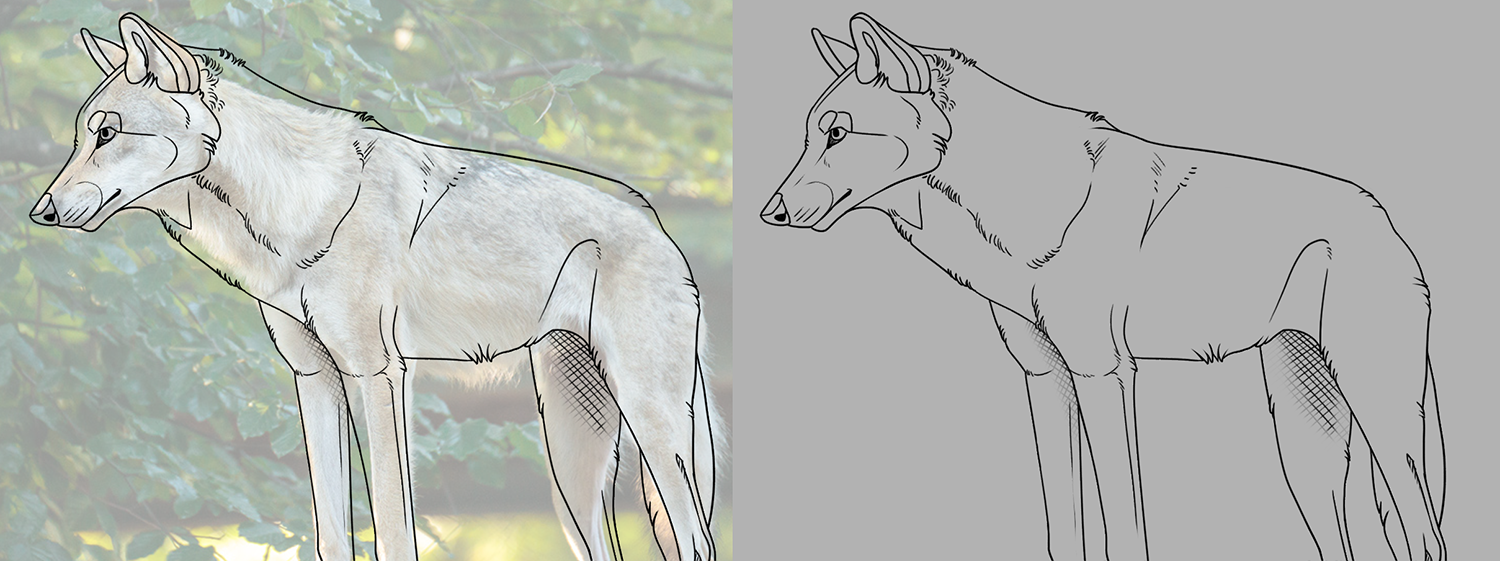
View larger image (opens in new tab)
"Gridding" is a way of copying, and the same rules apply. Gridding means that you add a grid on top of the image, and use the grid as guidelines to help you copy without tracing.
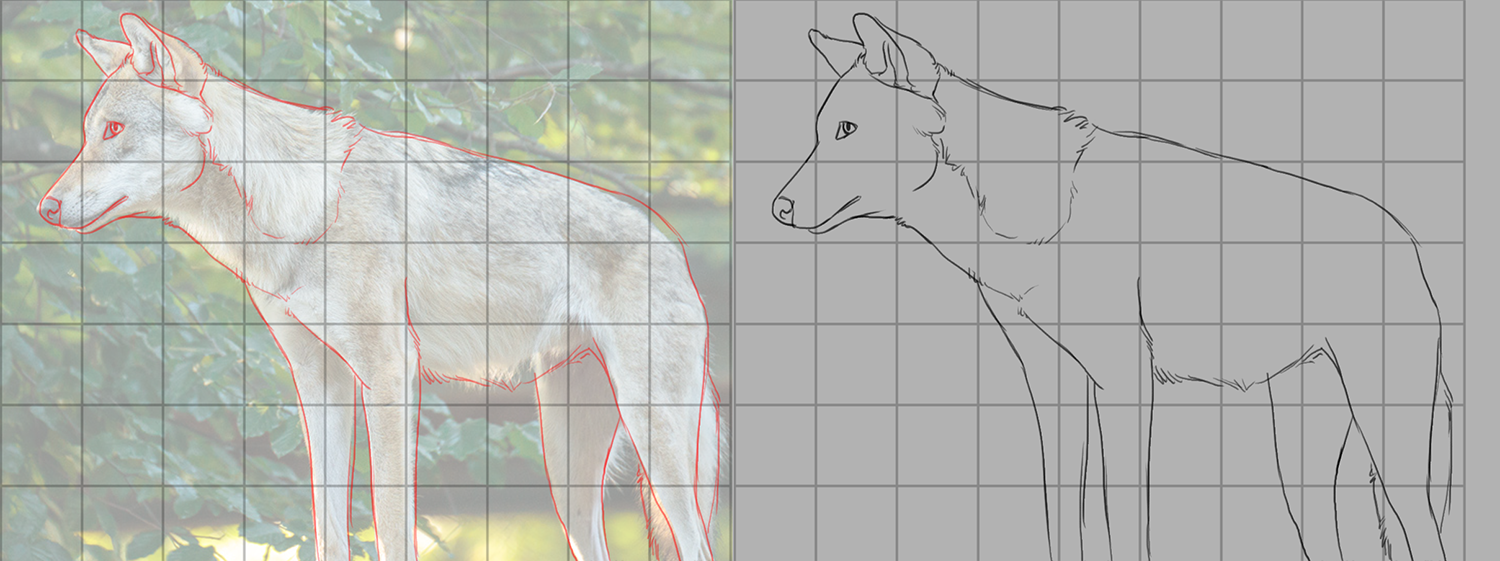
View larger image (opens in new tab)
Also known as: Manip, Photo manip, Photo edit
What does it mean?
Photo manipulation means that you take a photo and change it to look the way you want. It's often used to cut, re-color and merge different parts of photos together to create a new image. Photo manipulation is also commonly used in the beauty industry to make models look thinner, and to edit photos on social media.
How am I allowed to use it?
You're allowed to manipulate photos as a way of learning. You're allowed to upload manipulated photos online if you have permission from the owner of the photograph, and give proper credit.
How am I Not allowed to use it?
You're not allowed to manipulate a photograph and then upload it without permission from the original owner. You're not allowed to upload it without credit. You're not allowed to claim that you've made it without help, or make other people believe you've made it without help by not saying anything at all. You're not allowed to sell your manipulated image for profit (money, online-points, etc).
Example:
The background of the photo has been erased around the wolf. The wolf has then been re-colored, and the fur has been edited to hide the edges where the background was cut. Details have been added on top of the fur.

View larger image (opens in new tab)
Also known as: Normal reference
What does it mean?
Normal referencing means that you use one or multiple different materials (images, photos, videos) as inspiration and/or help, but without directly copying your references. Your finished image is clearly different from your references. You've only used your references as support, without tracing or copying any of them.
How am I allowed to use it?
You're always allowed to use references as support and inspiration. You're allowed to upload your own image and sell it if you want to. You don't have to give credit for references if you don't want to, as long as your image doesn't resemble the references too much (which would be copying).
Example:
The drawing is very different from the reference photo. The pose is similar, but the entire wolf is rotated to be viewed more from the front instead of the side as in the photo. The drawing is entirely its own, and can be uploaded without having to credit the reference photo.
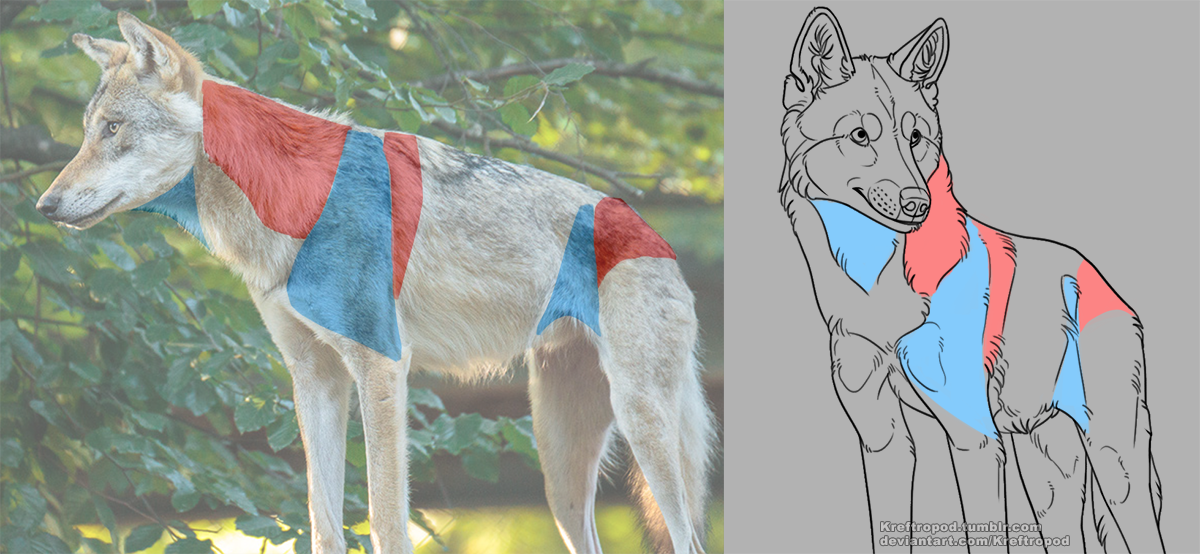
View larger image (opens in new tab)
Frequently asked questions
You write the name of the original owner, and link back to them, somewhere close to your image (e.g. below it). If you've used a photograph taken by John Doe, you could for example write "Original photo by John Doe" or "Reference by John Doe", and add a link to his site so that other people are able to find him and the material you've used.
Wrong ways to credit:
- "Credit to the artist" - This doesn't tell anyone who the original artist is, nor allow anyone to find them.
- "Not mine", "I don't own this" - But who does own it? You must name the owner/creator so that others can find them.
"But I'm not making any money, I'm just sharing it."
Perhaps, but say someone else now steals it from you instead. Even if you know who made the original, the next person doesn't, which can result in the image spreading further and further with no credit, which hurts the original artist (often financially, as well as emotionally). The more the image is spread without credit, the more people will start believing that "it's just one of those images that everyone uses for free", and start using it for their own profit (e.g. selling it on shirts or mugs, money that the original artist doesn't get despite them being the creator of the artwork). This can even lead to the original artist being sued over their own artwork, if the image has spread so much that it becomes difficult for them to prove that they're the one who created it. Even if you mean no harm by sharing the image, by sharing it without credit you can end up being the start of something that really hurts the artist in the long run.
Google, Pinterest and similar sites
Google, Pinterest and similar sites do Not give you permission to use the images you find there. Google is a search engine that will show you all kinds of images regardless of license, and Pinterest is a site where anyone very easily can upload any image, which results in a lot of art theft (users uploading images without the permission from the original creator or owner, and often without any proper credit). Being able to find an image through Google, Pinterest or similar sites does Not mean that they're free to use.
How do I know if I'm allowed to use the material?
If you're unable to find any information about if or how the material is allowed to be used, always assume that the answer is No (you're not allowed to use it). If you're on a website where the original creator or owner of the material has uploaded it on their own, there will usually be a place for them to add rules for usage or license information. Here are some examples:
Dawnthieves, https://dawnthieves.com/
Dawnthieves has information about how their photographs may be used directly on their frontpage. You can also find the specific license below every photo, as well as the name of the photographer (author).
Images (click to view):
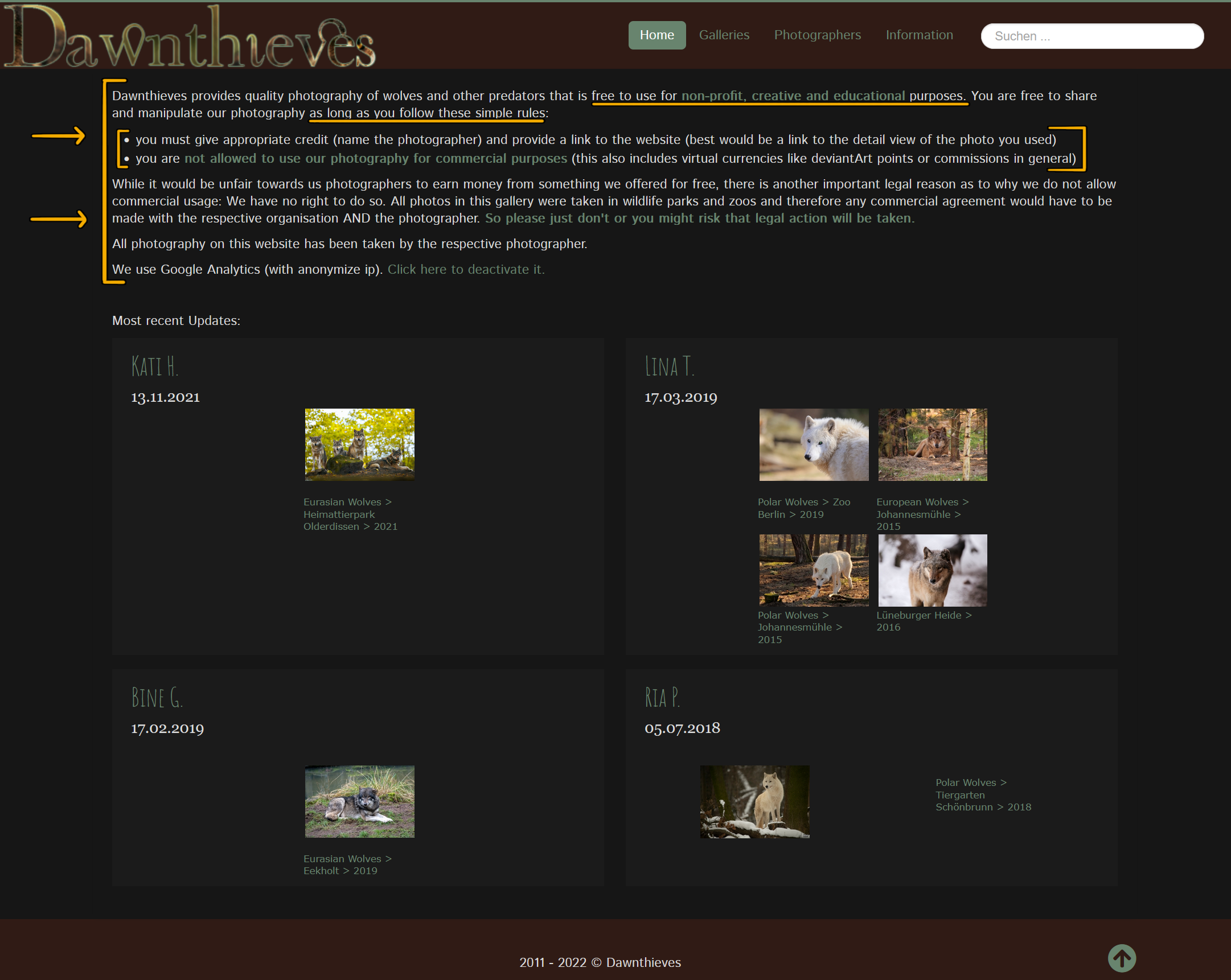

Deviantart, https://www.deviantart.com/
On Deviantart you're able to find the license listed in the description of the image (below the image). Many artists also write additional information in the description about if and how the image is allowed to be used.
Images (click to view):
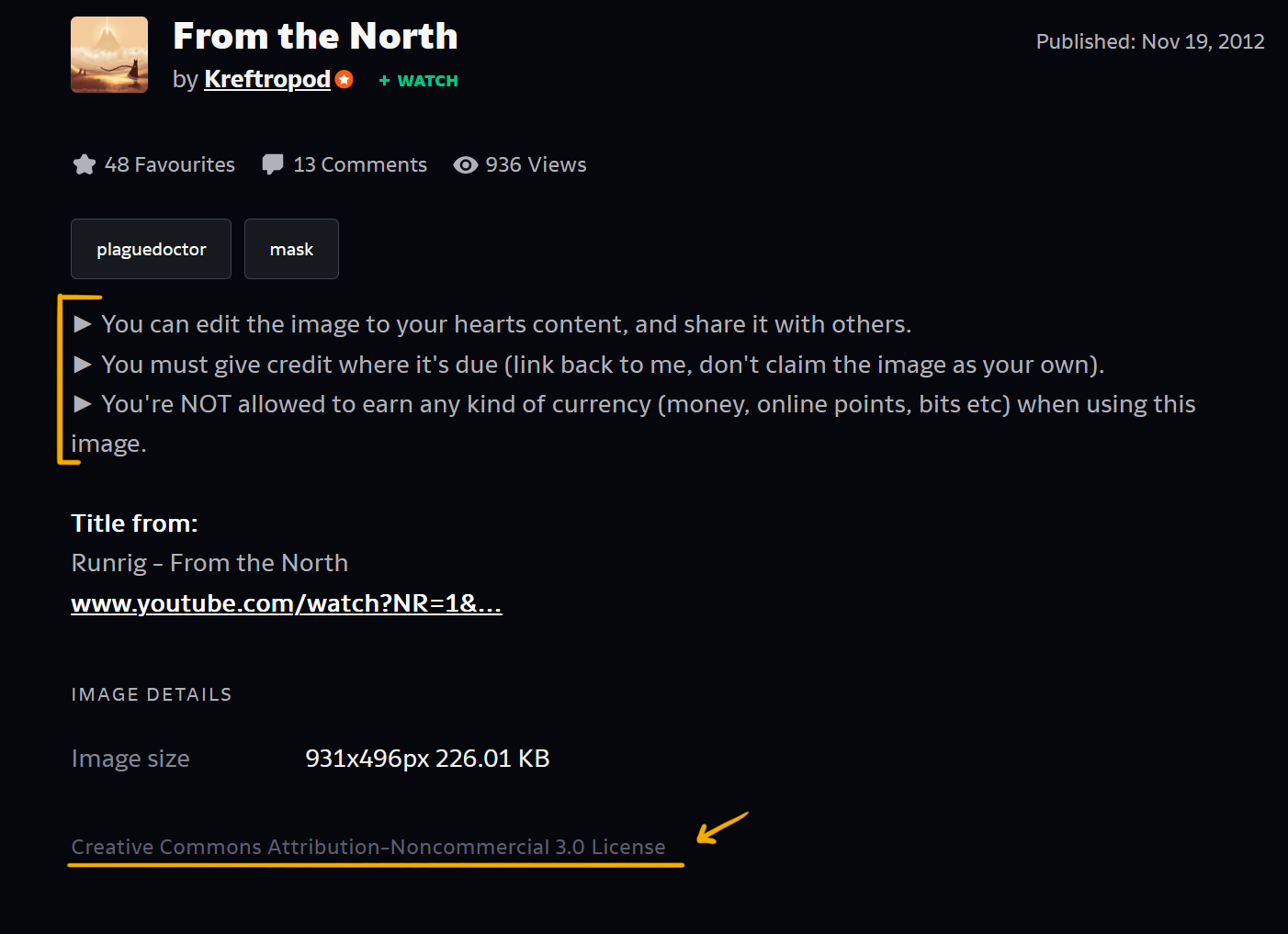
Wikimedia commons, https://commons.wikimedia.org/
Wikimedia is a sister-site to Wikipedia, where you're able to search for images and other materials. When viewing the page of an image on wikimedia, the license will be noted either in the "Summary" text below the image, or under its own header ("Licensing"). If there's a lot of information on the page you might have to scroll down a bit to find the Licensing header.
Images (click to view):


A Creative Commons license (CC) is, in short, a way for creators to grant copyright permissions (the right to use) for their works. You own anything that you have created (it's copyrighted to you), and with the help of licenses you can show other people if and how they are allowed to use what you've created. Different licenses grant different permission, and are often shortened to different letter-combinations.
- Attribution (BY): You must give credit to the owner of the material you've used.
- NonCommercial (NC): You're not allowed to use the material commercially to make money or any other kind of profit.
- NoDerivatives (ND): You're not allowed to edit or change the material in any way.
- Share alike (SA): You must share your own creation under the same license as the material you've used.
Here are some of the most common licenses and what they mean:

CC BY-SA, Attribution-Share Alike
You're allowed to use, edit and share the material, even commercially, as long as you give credit to the original creator/owner of the material. The image you create with the help of the material also has to be shared under the same license, meaning that anyone else is allowed to use, edit and share your image in the same way that you used the original material.

CC BY-NC, Attribution-NonCommercial
You're allowed to use, edit and share the material, but not commercially. You're not allowed to make any money (or similar profit) off of the image you've made with the help of the material. You also need to credit the original creator/owner of the material that you've used.

CC BY-ND, Attribution-NoDerivs
You're allowed to use and share the material, as long as you Do Not edit or change it in any way, and give credit to the original creator/owner of the material.

CC BY-NC-SA , Attribution-NonCommercial-ShareAlike
You're allowed to use, edit and share the material, but not commercially, as long as you give credit to the original creator/owner and share your own image under the same license.

CC0, "No Rights Reserved"
The material is free to use, edit and share, even commercially, without needing to give credit.

Public domain
The material is free to use, edit and share, even commercially, without needing to give credit.
All examples below are made by artists who've volunteered to either share some of their older works or to create new pieces for this project. More examples to come (by me and others).
I've tried to create examples in a variety of styles below to show that tracing or copying can look very different and be done with different styles. Remember that tracing or copying in and of itself is not a bad thing. It's only bad if you don't credit your sources properly, or use material that you're not allowed to use.
If you want to contribute with a piece of your own:
Send me a message on Tumblr, Deviantart or here on Toyhouse. Make sure that the original material you've traced, copied, manipulated or used as reference is free to share in this post as well, so that I'm able to both show your piece and compare it with the original. You may only contribute with pieces that you've made yourself. Do not suggest other peoples art. This is not the place to call out others that you suspect are tracing or copying. Be kind and keep it civil. Thank you!
Traced examples:
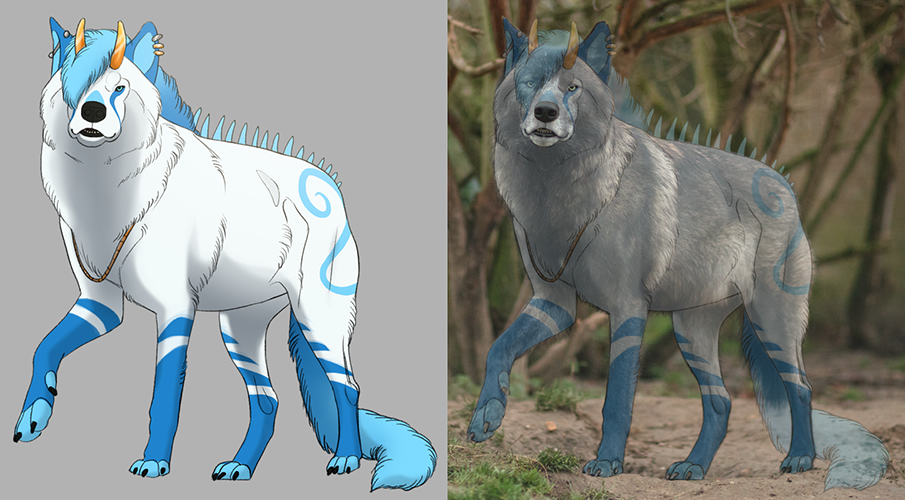
Example by Kreftropod
Original photo by Kati H.

Example by Kreftropod
Original photo by Bine G.
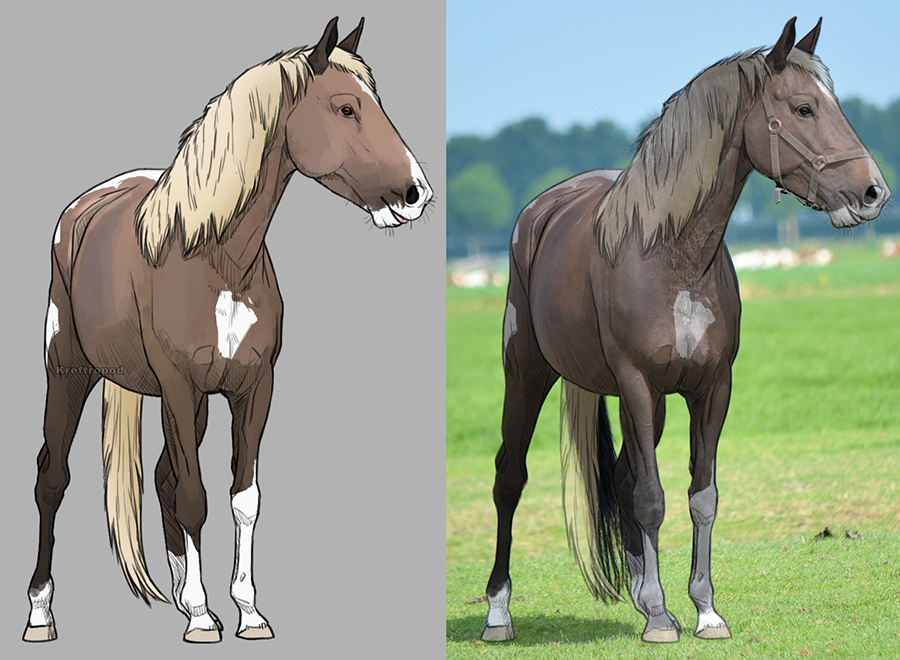
Example by Kreftropod
Original photo from PublicDomainPictures
Copied examples:
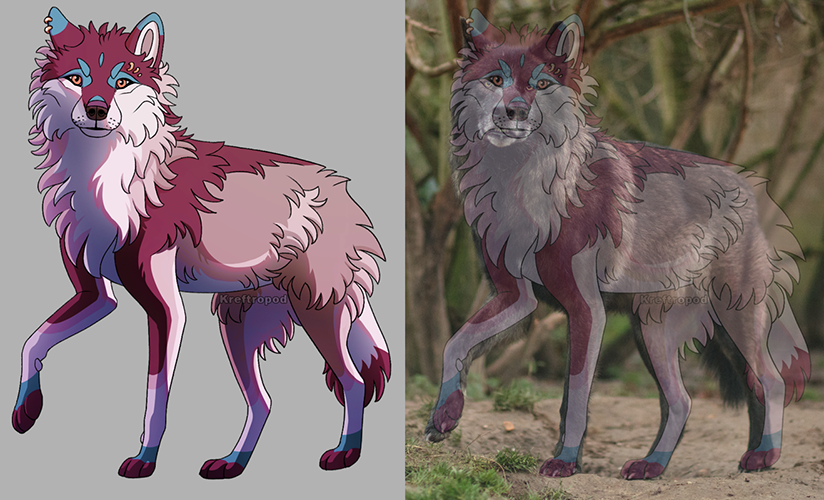
Example by Kreftropod
Original photo by Kati H.

Example by Zhetan
Original photo by Kati H.
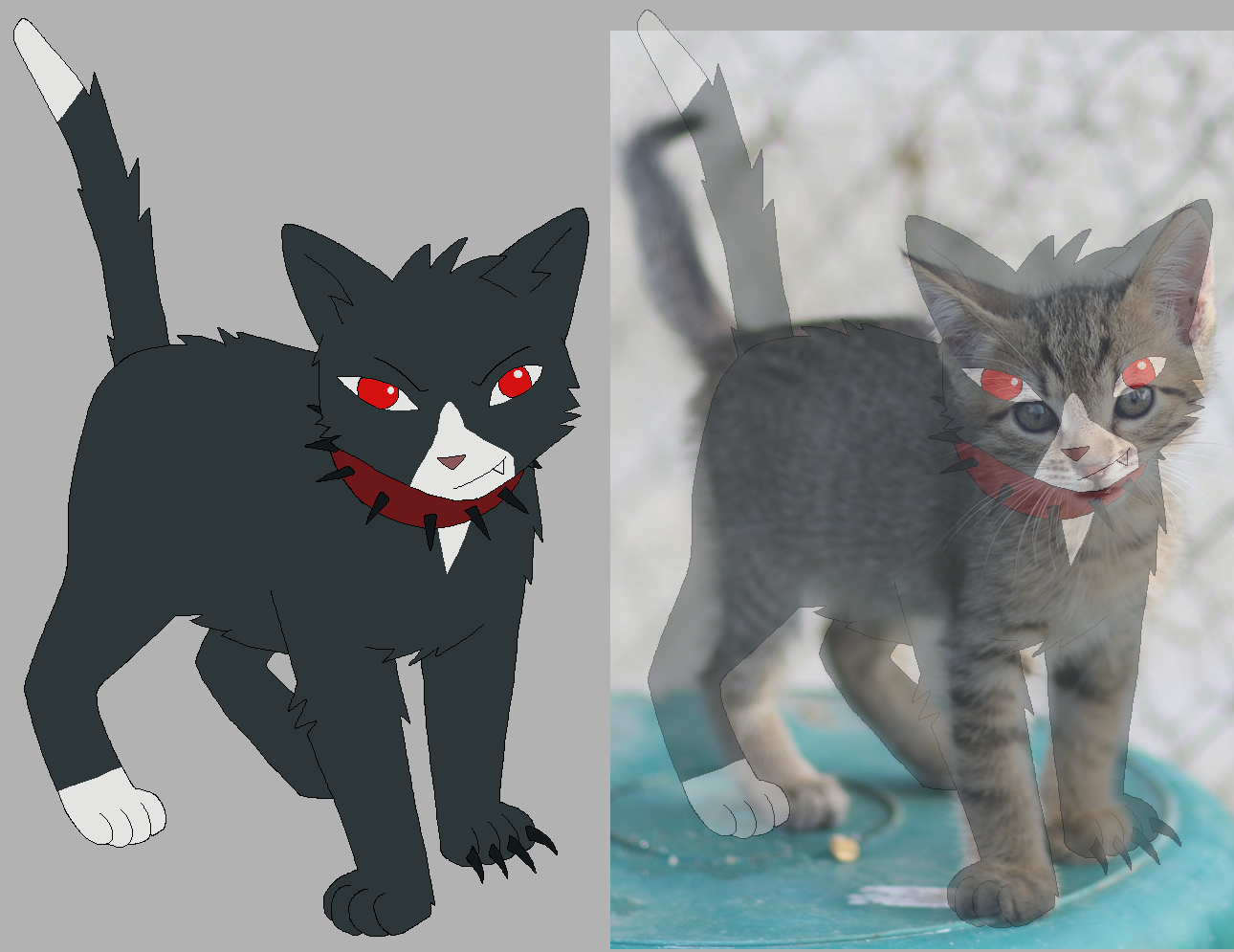
Example by Kreftropod
Original photo by AdinaVoicu
Photo manipulation examples:
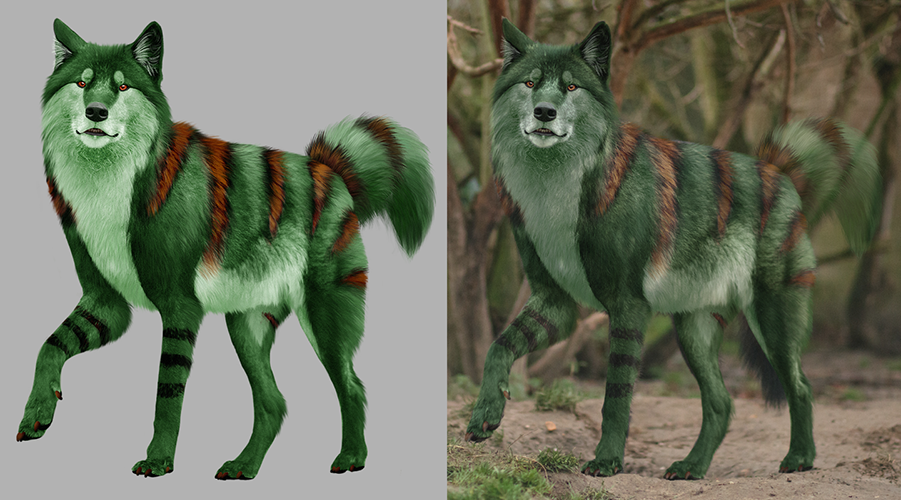
Example by Kreftropod
Original photo by Kati H.

Example by Kreftropod
Original photo by Sas R.
Referenced examples:
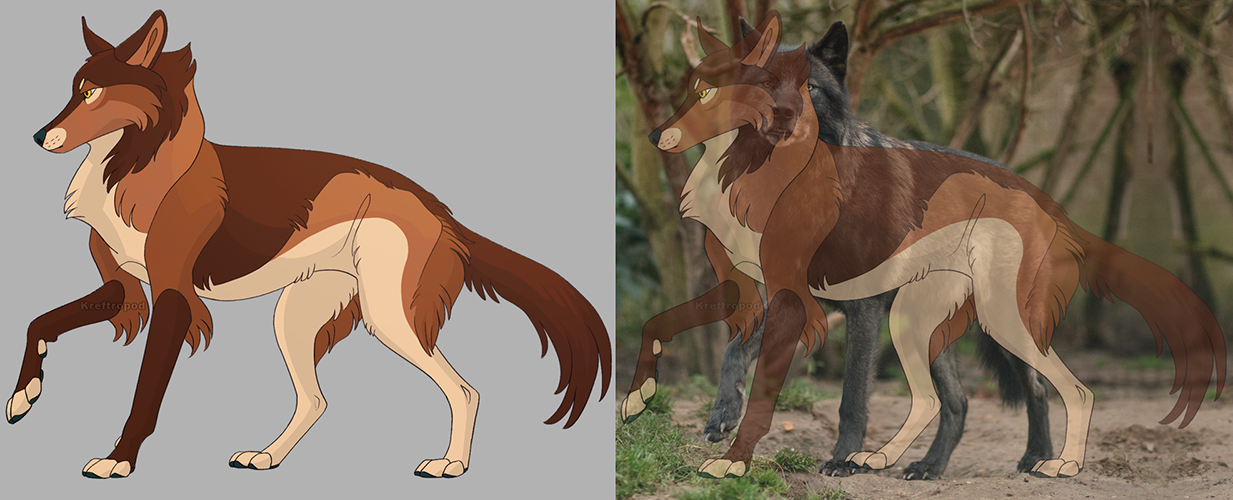
Example by Kreftropod, using a single reference.
Reference:
Photo by Kati H.

Example by Kreftropod, using multiple references.
References:
1. by Penderis,
2. by Rihaij,
3. from Pxhere (CC0),
4. from Pxhere (CC0)

